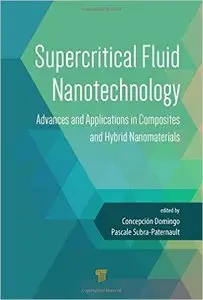Concepcion Domingo Pascual, Pascale Subra-Paternault, "Supercritical Fluid Nanotechnology: Advances and Applications in Composites and Hybrid Nanomaterials"
2015 | ISBN-10: 9814613401 | 566 pages | PDF | 17 MB
2015 | ISBN-10: 9814613401 | 566 pages | PDF | 17 MB
The environmental and climate program demands technological solutions in the chemical industry that incorporate prevention of pollution. Major advances are needed to reduce the use of organic solvents, such as methanol, toluene, xylene, methyl ethyl ketone, and dichloromethane, which account for 27 percent of total toxics release inventory chemicals. The replacement of those solvents is a key point to enable the transition from classical synthesis to green chemistry and nanotechnology concepts, i.e., to sustainability. The first radical option to achieve this goal is to completely avoid the use of solvents, as occurs in mechanochemical processes. A wide-range synthesis prospect is given by identifying between known solvents those with less negative environmental impact. This book concerns the analysis of the advantages of using compressed CO2 to produce not only improved materials in a better way, but also new nanoproducts. Recovering and using CO2, otherwise released into the atmosphere, is a means of recycling emissions resulting from other users. The use of supercritical CO2 is a complex option from a conceptual point of view requiring enhanced technical preparation.



